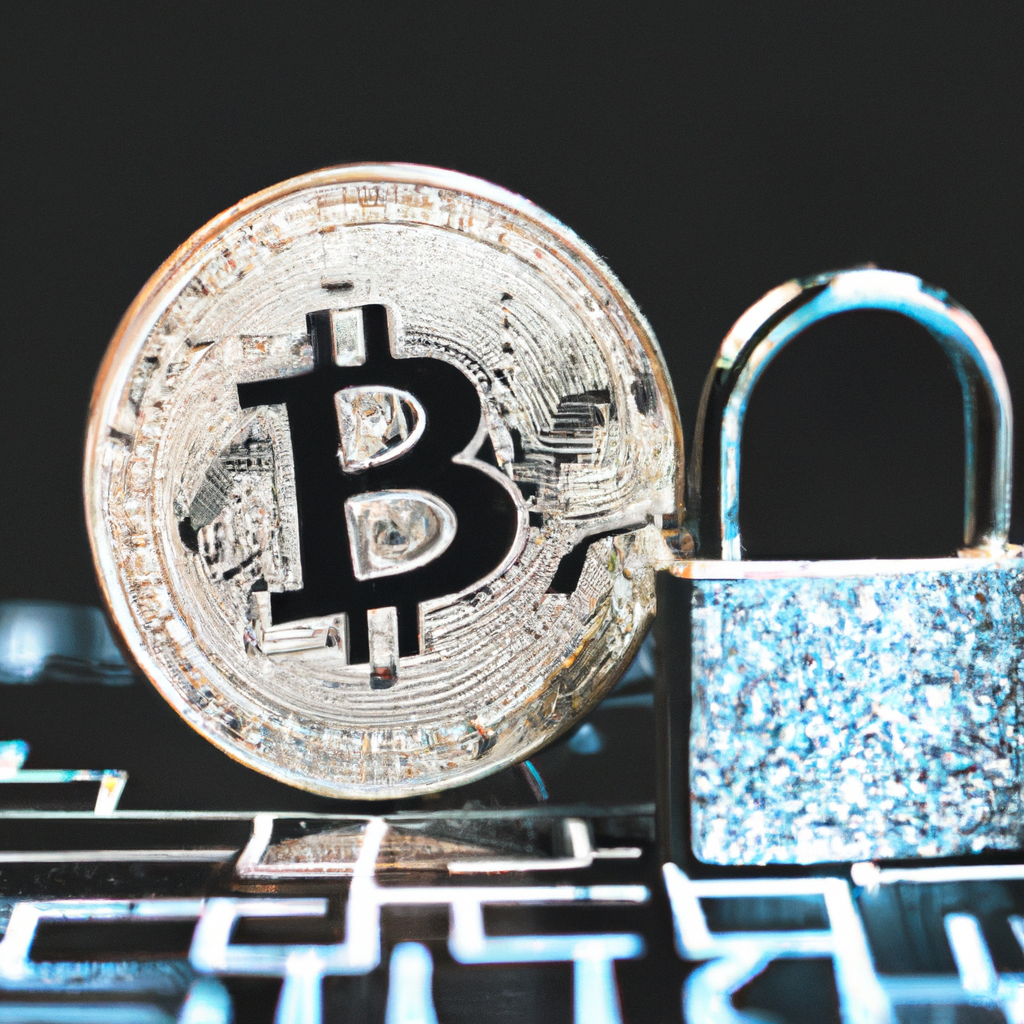In the fast-paced world of digital finance, the concepts of crypto security and commodity often intertwine, but they possess distinct characteristics and play different roles. This article delves into the key differences between crypto security and commodity, shedding light on their unique features and exploring how they impact the financial landscape. By understanding these disparities, individuals and businesses can make informed decisions when navigating the complex realm of digital assets.
- 1. Introduction
- 1.1. Definition of crypto security and commodity
- 1.2. Importance of crypto security and commodity
- 1.3. Overview of the article
- 2. Differences between Crypto Security and Commodity
- 2.1. Nature and characteristics
- 2.2. Value and volatility
- 2.3. Regulation and control
- 2.4. Investment and speculation
- 2.5. Marketplace and accessibility
- 3. Benefits and Risks of Crypto Security and Commodity
1. Introduction
Cryptocurrency and commodities are two distinct asset classes that attract investors and traders. While both offer opportunities for financial gains, they differ significantly in terms of their nature, characteristics, and regulatory frameworks. Understanding the key differences between crypto security and commodity is crucial for individuals looking to invest in these assets.
In this article, we will explore the fundamental disparities between cryptocurrency security and commodities. We will delve into the unique features, market dynamics, and risk factors associated with each asset class. By the end, readers will have a comprehensive understanding of the distinctions that set crypto security and commodities apart.
1.1. Definition of crypto security and commodity
Crypto security refers to the measures taken to protect digital assets such as cryptocurrencies, tokens, and other digital forms of value from unauthorized access, theft, or fraud. It involves the use of cryptographic techniques and protocols to ensure the confidentiality, integrity, and availability of these assets. The primary goal of crypto security is to safeguard the private keys or passwords that grant access to these digital assets, as they are the keys to unlocking and transferring ownership of the underlying value.
On the other hand, a commodity refers to a tangible or intangible good or product that has value and can be bought, sold, or traded. Commodity markets typically deal with physical goods such as gold, oil, wheat, or natural gas. However, in the context of cryptocurrencies, the term ‘commodity’ is used to refer to digital assets that are considered tradable and have value in the market.
In this article, we will explore the key differences between crypto security and commodity in the context of cryptocurrencies and digital assets.
1.2. Importance of crypto security and commodity
In today’s digital world, the importance of crypto security cannot be overstated. With the rise of cryptocurrencies, it has become crucial for individuals and businesses to prioritize the security of their digital assets. Cryptocurrencies, such as Bitcoin and Ethereum, are decentralized and rely on blockchain technology to ensure transparency and security. However, this does not mean that they are immune to security threats.
One of the key differences between crypto security and commodity security is the nature of the assets. While commodities, such as gold or oil, have physical forms that can be stored and protected, cryptocurrencies exist solely in a digital format. This makes them vulnerable to hacking, theft, and other cybercrimes.
The value of cryptocurrencies is derived from their scarcity and the trust placed in them by users. Therefore, maintaining the security of these digital assets is paramount. Without adequate security measures, individuals and businesses risk losing their entire investment.
Crypto security involves implementing various measures to protect digital assets from unauthorized access. This includes using strong passwords, enabling two-factor authentication, and ensuring the security of private keys. Additionally, individuals and businesses can use hardware wallets or cold storage solutions to add an extra layer of protection.
Commodity security, on the other hand, focuses on physical protection. Measures such as storing commodities in secure vaults, implementing surveillance systems, and safeguarding against theft or damage are essential.
In conclusion, while both crypto security and commodity security are important, the challenges they present differ significantly. Crypto security involves protecting digital assets from cyber threats, while commodity security focuses on physical protection. Understanding these key differences is crucial for individuals and businesses looking to invest in cryptocurrencies or commodities.
1.3. Overview of the article
Cryptocurrency and commodities are two vastly different types of assets that have gained popularity in recent years. While both can be lucrative investments, they operate in distinct ways and come with their own unique risks and benefits. This article aims to provide an overview of the key differences between cryptocurrency security and commodity investments. By understanding these differences, investors can make informed decisions about which asset class aligns with their investment goals and risk tolerance.
2. Differences between Crypto Security and Commodity
Cryptocurrency security and commodities are two distinct asset classes that have their own unique characteristics and differences. Understanding these differences is essential for investors looking to navigate the financial markets effectively.
1. Nature of the Assets:
Cryptocurrency security refers to the digital assets that utilize cryptographic techniques to secure financial transactions, control the creation of additional units, and verify the transfer of assets. It operates on a decentralized network called blockchain. On the other hand, commodities are tangible goods or raw materials that are used in various industries. Examples of commodities include gold, oil, natural gas, agricultural products, etc.
2. Value Determination:
The value of cryptocurrency security is primarily driven by factors such as market demand, investor sentiment, and technological advancements. It is highly volatile and can experience significant price fluctuations within short periods. In contrast, the value of commodities is influenced by factors like supply and demand dynamics, geopolitical events, weather conditions, and economic indicators.
3. Regulation and Oversight:
Cryptocurrency security operates in a relatively unregulated environment, with decentralized networks allowing for peer-to-peer transactions without the involvement of intermediaries. This lack of regulation can result in higher risks and increased vulnerability to fraud and hacking. Commodities, on the other hand, are subject to various regulatory bodies and organizations that monitor their trading activities, ensure fair practices, and maintain market stability.
4. Accessibility and Liquidity:
Cryptocurrency security can be easily accessed and traded through online platforms or cryptocurrency exchanges. It offers high liquidity, allowing investors to buy and sell assets quickly. Commodities, on the other hand, may require physical storage or specialized infrastructure for trading. The liquidity of commodities can vary depending on the specific market and the availability of buyers and sellers.
5. Purpose and Use:
Cryptocurrency security is often viewed as a digital currency or an investment asset. Its primary purpose is to facilitate secure and efficient financial transactions. Commodities, on the other hand, have various uses in industries such as manufacturing, agriculture, energy production, and construction. They are often used as raw materials or inputs for production processes.
In conclusion, while both cryptocurrency security and commodities are valuable assets, they differ significantly in terms of their nature, value determination, regulation, accessibility, and purpose. Investors should carefully consider these differences and their investment goals when deciding to invest in either asset class.
2.1. Nature and characteristics
Nature and Characteristics:
When it comes to understanding the differences between crypto security and commodity, it is important to first grasp their nature and characteristics. Crypto security refers to digital assets that are secured using cryptographic techniques. These assets exist in the form of cryptocurrencies, such as Bitcoin, Ethereum, or Ripple. They are decentralized and operate on blockchain technology, which ensures transparency, security, and immutability.
On the other hand, commodities are tangible goods that can be bought and sold in physical or virtual markets. They include natural resources, agricultural products, precious metals, and energy resources. Commodities are influenced by supply and demand dynamics, geopolitical factors, and market conditions.
While both crypto security and commodities hold value, they differ significantly in terms of their underlying nature and characteristics. Understanding these distinctions is crucial for investors and traders looking to navigate the complexities of these two asset classes.
2.2. Value and volatility
Value and volatility are key aspects of both crypto security and commodity investments. However, there are notable differences in how these two types of assets exhibit value and volatility.
In the world of cryptocurrency, value is primarily driven by market demand and speculation. The value of a particular crypto asset can experience significant fluctuations based on factors such as investor sentiment, market trends, and regulatory developments. This volatility can lead to rapid price swings, making cryptocurrencies a high-risk investment.
On the other hand, commodities like gold, oil, and agricultural products derive their value from real-world demand and supply dynamics. The value of a commodity is influenced by various factors such as global economic conditions, geopolitical events, and natural disasters. While commodities can also experience price volatility, it is often more predictable and gradual compared to the extreme swings seen in the cryptocurrency market.
Furthermore, crypto security and commodities differ in terms of their perceived stability as investment options. Cryptocurrencies are still relatively new and innovative assets, which can make them more susceptible to regulatory uncertainties and technological risks. In contrast, commodities have a long history of being recognized as tangible assets with inherent value, providing a certain level of stability to investors.
In conclusion, while both crypto security and commodities possess value and volatility, the underlying factors driving their value and the nature of their volatility differ significantly. Understanding these distinctions is crucial for investors looking to diversify their portfolios and navigate the complexities of the financial markets.
2.3. Regulation and control
Regulation and control are important aspects to consider when comparing crypto security and commodities. While both involve investments and financial transactions, they are subject to different regulatory frameworks.
Crypto security, which refers to digital assets like cryptocurrencies and tokens, operates in a decentralized and largely unregulated environment. This lack of centralized control means that the value and security of these assets can be influenced by various factors such as market demand and investor sentiment. Additionally, the anonymity and pseudonymity associated with crypto security can pose challenges in terms of regulatory oversight and anti-money laundering measures.
On the other hand, commodities like gold, oil, and agricultural products are highly regulated by government bodies and international organizations. These regulations aim to ensure fair trading practices, prevent market manipulation, and protect consumers. Commodity markets are subject to strict rules and reporting requirements, and their prices are influenced by factors such as supply and demand, geopolitical events, and economic indicators.
In summary, the key differences between crypto security and commodities lie in the level of regulation and control. While crypto security operates in a decentralized and largely unregulated space, commodities are subject to extensive regulatory oversight. Understanding these distinctions is crucial for investors and individuals looking to navigate these different investment options effectively.
2.4. Investment and speculation
Investment and speculation are two terms commonly used in the financial world, but they have distinct meanings. While both involve putting money into assets with the goal of making a profit, the strategies and risks associated with each differ significantly.
Investment refers to the allocation of funds into assets that are expected to generate returns over a long period. Investors analyze various factors such as market trends, financial performance, and future prospects before making decisions. The focus is on long-term growth and income generation, with the intention of preserving and growing the initial capital.
On the other hand, speculation involves taking higher risks in the hope of short-term gains. Speculators rely more on market fluctuations, trends, and rumors to make investment decisions. They often engage in quick buying and selling of assets, aiming to profit from price volatility. Speculation is characterized by a higher level of uncertainty and requires active monitoring of market movements.
When it comes to cryptocurrencies, such as Bitcoin or Ethereum, they can be considered both as investment assets and speculative instruments. Their inherent volatility and potential for substantial price swings make them attractive to speculators seeking short-term profits. However, many investors also view cryptocurrencies as a long-term investment opportunity, considering their potential for future growth and adoption.
In the context of crypto security and commodities, there are key differences to consider. Crypto security primarily focuses on the secure storage and handling of digital assets, ensuring protection from theft, hacking, or unauthorized access. It involves utilizing advanced cryptographic techniques and secure storage solutions, such as hardware wallets or cold storage, to safeguard the cryptocurrencies.
On the other hand, commodities refer to physical goods that can be traded, such as gold, oil, or agricultural products. Commodity investments are often made with the intention of diversifying a portfolio or hedging against inflation. Unlike crypto security, commodities do not involve the same level of digital asset protection considerations.
In summary, investment and speculation differ in terms of time horizon, risk tolerance, and decision-making process. While investment aims for long-term growth and income generation, speculation seeks short-term gains through active trading. When it comes to cryptocurrencies, they can serve as both investment assets and speculative instruments. Additionally, crypto security focuses on safeguarding digital assets, while commodities involve physical goods traded in the market.
2.5. Marketplace and accessibility
Marketplace and accessibility:
When it comes to the marketplace and accessibility, there are significant differences between crypto security and commodity investments. Crypto securities, such as cryptocurrencies, are typically traded on cryptocurrency exchanges or digital asset platforms. These platforms enable users to buy, sell, and trade various digital assets, including cryptocurrencies.
Commodities, on the other hand, are traded on traditional exchanges or physical marketplaces. Investors can access commodity markets through commodity futures exchanges, where contracts for future delivery of commodities are bought and sold. Additionally, commodities can be traded through over-the-counter (OTC) markets or specialized platforms.
The accessibility of crypto securities and commodities also differs. Crypto securities are relatively more accessible as they can be bought and sold online, allowing investors to participate in the market from anywhere with an internet connection. On the contrary, commodities often require physical handling, storage, and transportation, which can limit accessibility for individual investors.
Overall, the marketplace and accessibility for crypto security investments and commodities differ significantly, with crypto securities being primarily traded on digital platforms and offering greater accessibility compared to physical commodity markets.
3. Benefits and Risks of Crypto Security and Commodity
The benefits of crypto security and commodity investments are numerous. Firstly, they offer potential high returns on investment. The volatile nature of cryptocurrencies and commodities can lead to significant price fluctuations, allowing investors to make substantial profits. Additionally, both crypto security and commodity investments provide diversification opportunities. By adding these assets to a portfolio, investors can spread their risk and reduce the impact of any single investment’s performance. Furthermore, crypto security and commodity investments have the potential for global reach. These assets can be traded across borders without the need for intermediaries, making them accessible to a broader range of investors. However, it is important to consider the risks associated with crypto security and commodity investments. Firstly, the volatility of these assets can also lead to significant losses. The price fluctuations that offer potential high returns can also result in substantial financial setbacks. Additionally, the lack of regulation in the crypto security and commodity markets poses a risk. Without proper oversight, fraudulent activities and market manipulations can occur, potentially leading to financial losses for investors. Furthermore, the reliance on technology for crypto security investments introduces cybersecurity risks. Hackers and cybercriminals can target these digital assets, leading to potential theft or loss of funds. It is crucial for investors to thoroughly understand and manage these risks when considering crypto security and commodity investments.
3.1. Benefits of crypto security
Crypto security offers several benefits to users. One of the key advantages is the enhanced protection it provides for digital assets. By utilizing cryptographic techniques, cryptocurrencies can be securely stored and transferred, minimizing the risk of unauthorized access or theft. This is particularly important considering the increasing prevalence of cyber threats and hacking attempts targeting digital currencies.
Another benefit of crypto security is its decentralized nature. Unlike traditional financial systems that rely on centralized authorities, cryptocurrencies operate on a decentralized network called blockchain. This distributed ledger technology ensures transparency, immutability, and resistance to censorship, making it more resilient to fraud or manipulation.
Additionally, crypto security enables fast and efficient transactions. With traditional financial systems, cross-border transactions can be costly and time-consuming. Cryptocurrencies, on the other hand, facilitate near-instantaneous transfers with lower transaction fees, making them ideal for global transactions.
Furthermore, crypto security empowers individuals with greater control over their financial assets. By eliminating the need for intermediaries such as banks or payment processors, cryptocurrencies allow users to have full ownership and control over their funds. This fosters financial inclusivity and provides individuals with the ability to participate in the global economy, regardless of their location or background.
Overall, the benefits of crypto security include enhanced asset protection, decentralization, fast transactions, and greater financial empowerment.
3.2. Risks of crypto security
Cryptocurrency security carries several risks that users should be aware of. One major risk is the potential for hacking and theft. Since digital currencies operate on decentralized networks, they are vulnerable to cyber attacks and breaches. Hackers can gain unauthorized access to wallets and steal the cryptocurrencies stored within them. This risk is heightened by the fact that transactions made with cryptocurrencies are irreversible, meaning that once a transaction is completed, it cannot be reversed or refunded.
Another risk is the prevalence of scams and fraudulent activities in the crypto space. Due to the anonymous nature of cryptocurrency transactions, it can be difficult to trace and recover funds lost in fraudulent schemes. Scammers often take advantage of unsuspecting individuals by promoting fake initial coin offerings (ICOs), Ponzi schemes, or phishing attacks.
Additionally, there is the risk of regulatory uncertainty. Governments around the world are still grappling with how to regulate cryptocurrencies effectively. The lack of clear and consistent regulations can lead to uncertainty and volatility in the crypto market. Changes in regulations or new restrictions imposed on cryptocurrencies can have a significant impact on their value and usability.
Furthermore, crypto security also faces the risk of technological vulnerabilities. Cryptocurrencies rely on complex cryptographic algorithms and blockchain technology. However, these technologies are not immune to flaws and vulnerabilities. Any weaknesses or bugs in the underlying technology can be exploited by malicious actors to compromise the security of the cryptocurrency.
In conclusion, while cryptocurrencies offer many benefits, it is important to be aware of the associated risks. Users should take necessary precautions to protect their digital assets and stay informed about the evolving crypto security landscape.
3.3. Benefits of commodity
Cryptocurrency security and commodity investing have their own unique benefits and risks.
Benefits of Crypto Security:
1. Decentralization: Cryptocurrencies are decentralized, meaning they are not controlled by any central authority. This provides individuals with more financial freedom and reduces the risk of government interference.
2. Transparency: Blockchain technology, which underlies cryptocurrencies, offers a transparent and immutable ledger of transactions. This enhances trust and reduces the possibility of fraud.
3. Potential for High Returns: Cryptocurrencies have the potential for significant price volatility, which can lead to substantial returns for investors who time their trades correctly.
Benefits of Commodity Investing:
1. Tangible Asset: Commodities, such as gold or oil, are physical assets that hold intrinsic value. This provides a sense of security as investors have ownership of a tangible asset.
2. Diversification: Investing in commodities can help diversify an investment portfolio, reducing overall risk. Commodities often have a low correlation with traditional financial assets, such as stocks and bonds.
3. Inflation Hedge: Certain commodities, like gold, are often considered a hedge against inflation. During periods of inflation, the value of commodities may increase, protecting investors’ purchasing power.
It’s important to note that both crypto security and commodity investing come with their own risks, and individuals should carefully consider their risk tolerance and investment goals before making any decisions.
3.4. Risks of commodity
Cryptocurrency has gained significant popularity in recent years, with many people considering it as an alternative investment option. However, like any investment, there are both benefits and risks associated with crypto security and commodity.
One of the key benefits of crypto security is its potential for high returns. Cryptocurrencies have experienced substantial price growth in the past, leading to significant profits for early investors. Additionally, crypto security offers the advantage of decentralization. Transactions are recorded on a blockchain, which ensures transparency and eliminates the need for intermediaries.
On the other hand, investing in crypto security also comes with its fair share of risks. The most prominent risk is the high volatility of cryptocurrencies. Prices can fluctuate dramatically within a short period, leading to potential losses for investors. Moreover, the lack of regulation and oversight in the crypto market makes it susceptible to fraud and scams.
Commodity investment, on the other hand, has its own set of benefits and risks. One of the main advantages of investing in commodities is their tangible nature. Commodities such as gold, oil, and agricultural products have inherent value and can be physically owned. This provides a sense of security to investors.
However, commodity investment also carries risks. The price of commodities is influenced by various factors such as supply and demand, geopolitical events, and economic conditions. These factors can lead to price volatility, affecting the value of investments. Additionally, commodity investments may require storage and maintenance costs, further adding to the overall risk.
In conclusion, both crypto security and commodity investments have their own benefits and risks. It is crucial for investors to carefully evaluate their risk tolerance and conduct thorough research before making any investment decisions in these markets.
3.5. Comparison of benefits and risks
When comparing the benefits and risks of crypto security and commodity, it is important to consider various factors. Crypto security, also known as cryptocurrency, offers several advantages. Firstly, it provides a decentralized form of currency, eliminating the need for intermediaries like banks. This decentralized nature offers increased security and privacy for transactions. Additionally, crypto security allows for faster and cheaper cross-border transactions compared to traditional methods. It also offers potential for high returns on investment, as the value of cryptocurrencies can fluctuate significantly.
However, there are also risks associated with crypto security. One major concern is the volatility of cryptocurrency markets. The value of cryptocurrencies can experience extreme fluctuations, which can lead to substantial financial losses for investors. Furthermore, the lack of regulation in the crypto market makes it susceptible to fraud and scams. There have been instances of hacking and theft, where individuals lost their cryptocurrencies due to security breaches. Lastly, the complexity of understanding and managing cryptocurrencies can be a barrier for some individuals, as it requires technical knowledge and expertise.
On the other hand, commodities like gold, oil, and agricultural products have their own set of benefits and risks. One of the primary advantages of commodities is their tangible nature. Unlike cryptocurrencies, commodities have physical existence, which can provide a sense of security to investors. Additionally, commodities have a long history of being used as a store of value and a hedge against inflation. They offer diversification options for investment portfolios. However, commodities also come with risks, such as market volatility and fluctuations in supply and demand. The prices of commodities can be influenced by various factors including geopolitical events, weather conditions, and global economic trends. Furthermore, commodities require storage and transportation, which can add additional costs and risks.
In conclusion, both crypto security and commodities offer their own set of benefits and risks. It is crucial for investors to carefully evaluate their risk tolerance, investment goals, and market conditions before choosing between the two.
Conclusion
In conclusion, while both crypto security and commodity investments may offer potential benefits, they differ significantly in terms of their nature, purpose, and underlying assets. Crypto security focuses on securing digital assets and transactions through encryption and decentralized technology, while commodities involve tangible goods and physical markets. Understanding these key differences is essential for investors to make informed decisions and mitigate risks.





